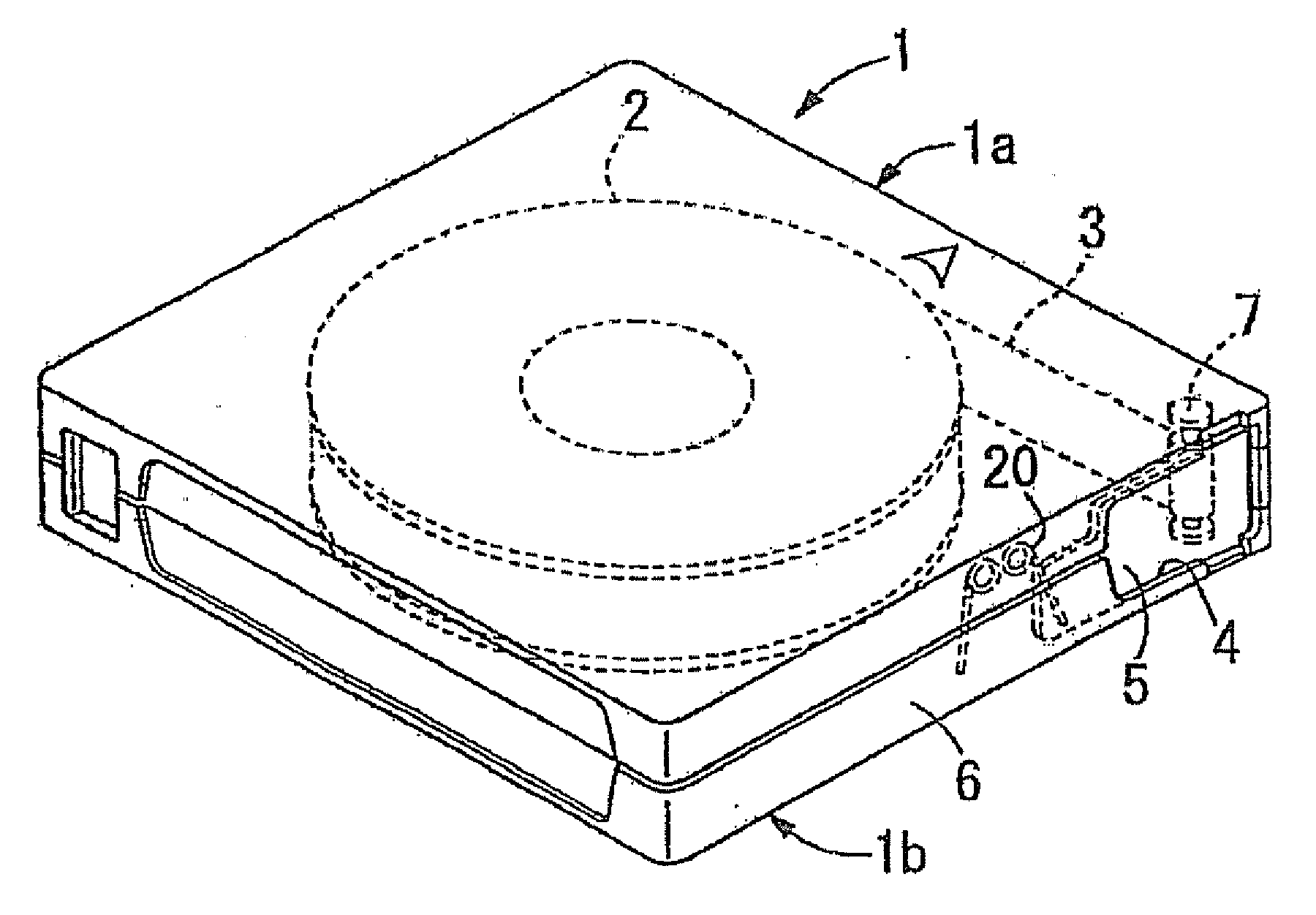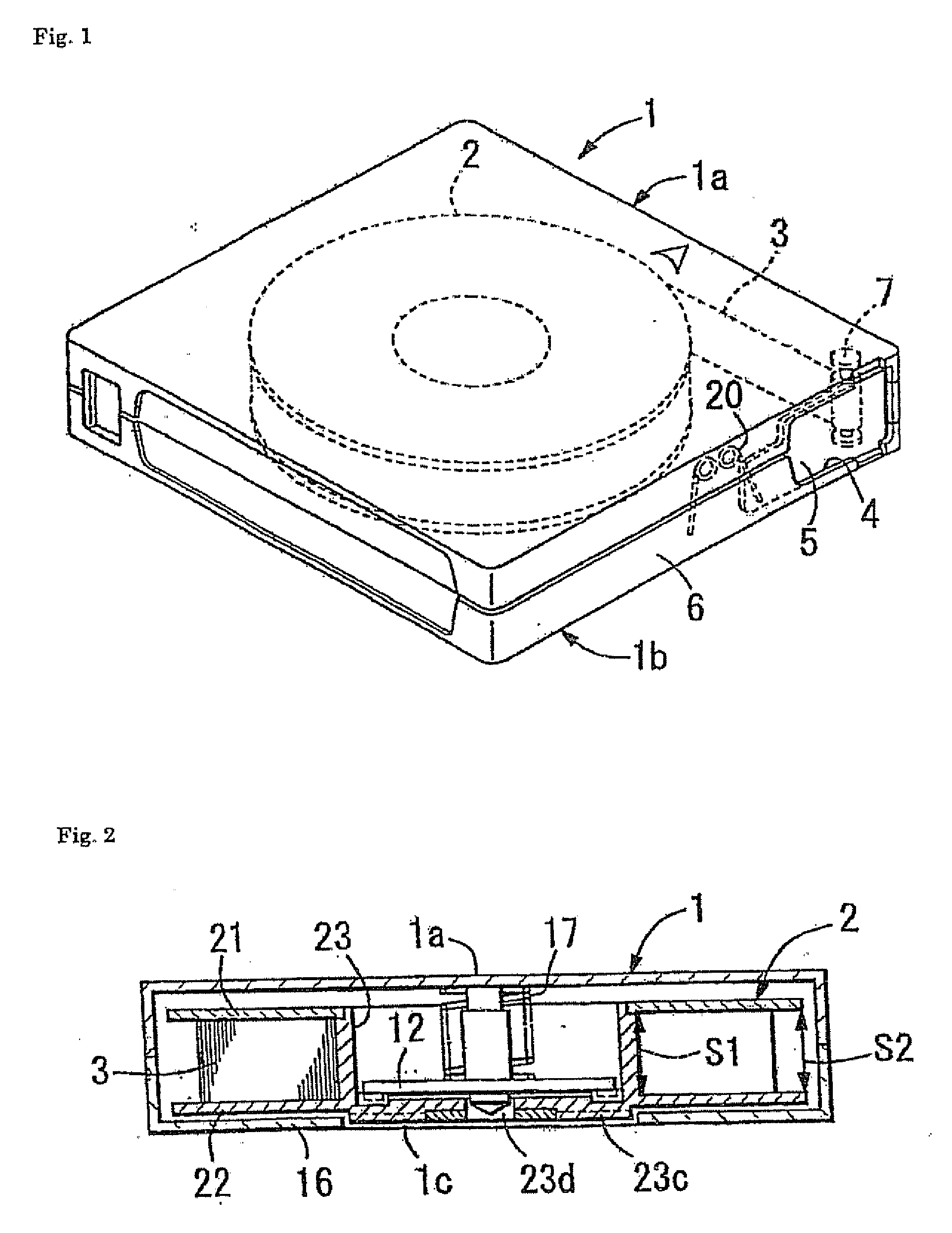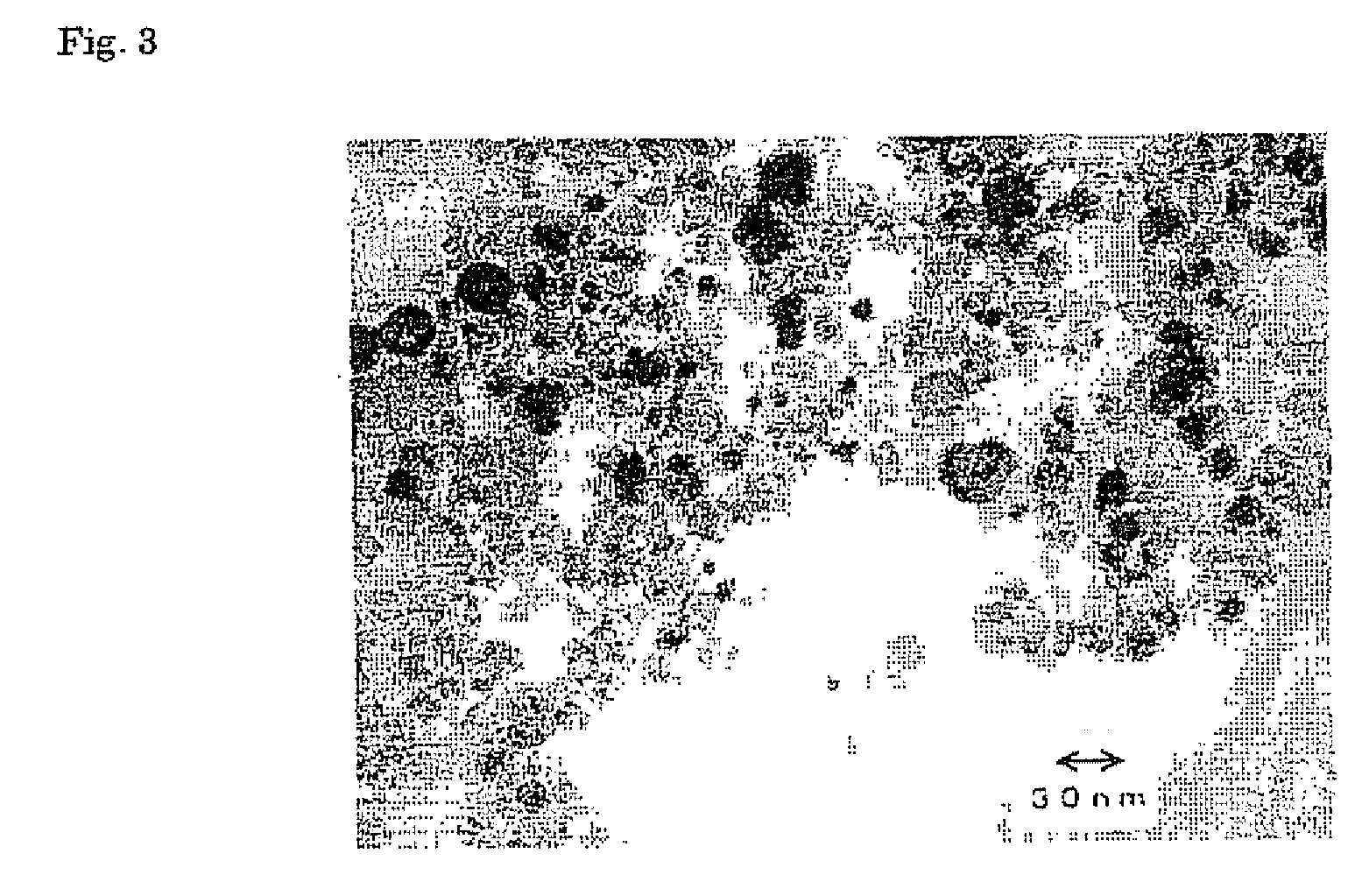Magnetic recording medium and magnetic recording cassette
a recording medium and magnetic technology, applied in the field of magnetic recording mediums, can solve the problems of inability to overcome the problem, the production output decreases, and the formation of a thin layer of magnetic layers, and achieve the effect of high recording density
- Summary
- Abstract
- Description
- Claims
- Application Information
AI Technical Summary
Benefits of technology
Problems solved by technology
Method used
Image
Examples
example 1
[0163] Synthesis of Ultrafine Magnetic Particles:
[0164] Iron nitrate (III) (0.074 mol) and neodymium nitrate (0.002 mol) were dissolved in water (600 cc). Separately from this aqueous solution of nitrates, sodium hydroxide (0.222 mol) was dissolved in water (600 cc). To this aqueous sodium hydroxide solution, was added the aqueous nitrate solution, and the mixture was stirred for 5 minutes to form a hydroxide (co-precipitate) of iron and neodymium. The hydroxide was washed with water and filtered to collect the hydroxide. To this hydroxide (containing water), were further added water (30 cc) and boric acid (H3BO3) (0.5 mol) and the mixture was heated at 60° C. in an aqueous boric acid solution, while the hydroxide of iron and neodymium was being again dispersed. The resultant dispersion was spread onto a vat and dried at 60° C. for 4 hours to evaporate off water. Thus, a homogenous mixture of the hydroxide of iron and neodymium and boric acid was prepared.
[0165] This mixture was c...
example 2
[0191] A computer tape was made in the same manner as in Example 1, except that magnetic powder prepared by the following synthesis was used.
[0192] Synthesis of Ultrafine Magnetic Powder:
[0193] Iron nitrate (III) (0.098 mol), cobalt nitrate (0.042 mol) and neodymium nitrate (0.002 mol) were dissolved in water (200 cc). Separately from this aqueous nitrate solution, an aqueous sodium hydroxide solution was prepared by dissolving sodium hydroxide (0.42 mol) in water (200 cc). To the aqueous nitrate solution, was added the aqueous sodium hydroxide solution, and the mixture was stirred for 5 minutes to form a hydroxide of iron, cobalt and neodymium. This hydroxide was washed with water and filtered to collect the hydroxide. To the hydroxide (containing water), were further added water (150 cc) and boric acid (0.1 mol) so as to again disperse the hydroxide of iron, cobalt and neodymium in this aqueous boric acid solution. The resulting dispersion was treated by heating at 90° C. for 2 ...
example 3
[0196] A computer tape was made in the same manner as in Example 1 except that a magnetic powder having a particle size of 15 nm was prepared by the same method as of Example 1.
PUM
| Property | Measurement | Unit |
|---|---|---|
| number average particle size | aaaaa | aaaaa |
| total thickness | aaaaa | aaaaa |
| thickness | aaaaa | aaaaa |
Abstract
Description
Claims
Application Information
 Login to View More
Login to View More - R&D
- Intellectual Property
- Life Sciences
- Materials
- Tech Scout
- Unparalleled Data Quality
- Higher Quality Content
- 60% Fewer Hallucinations
Browse by: Latest US Patents, China's latest patents, Technical Efficacy Thesaurus, Application Domain, Technology Topic, Popular Technical Reports.
© 2025 PatSnap. All rights reserved.Legal|Privacy policy|Modern Slavery Act Transparency Statement|Sitemap|About US| Contact US: help@patsnap.com



